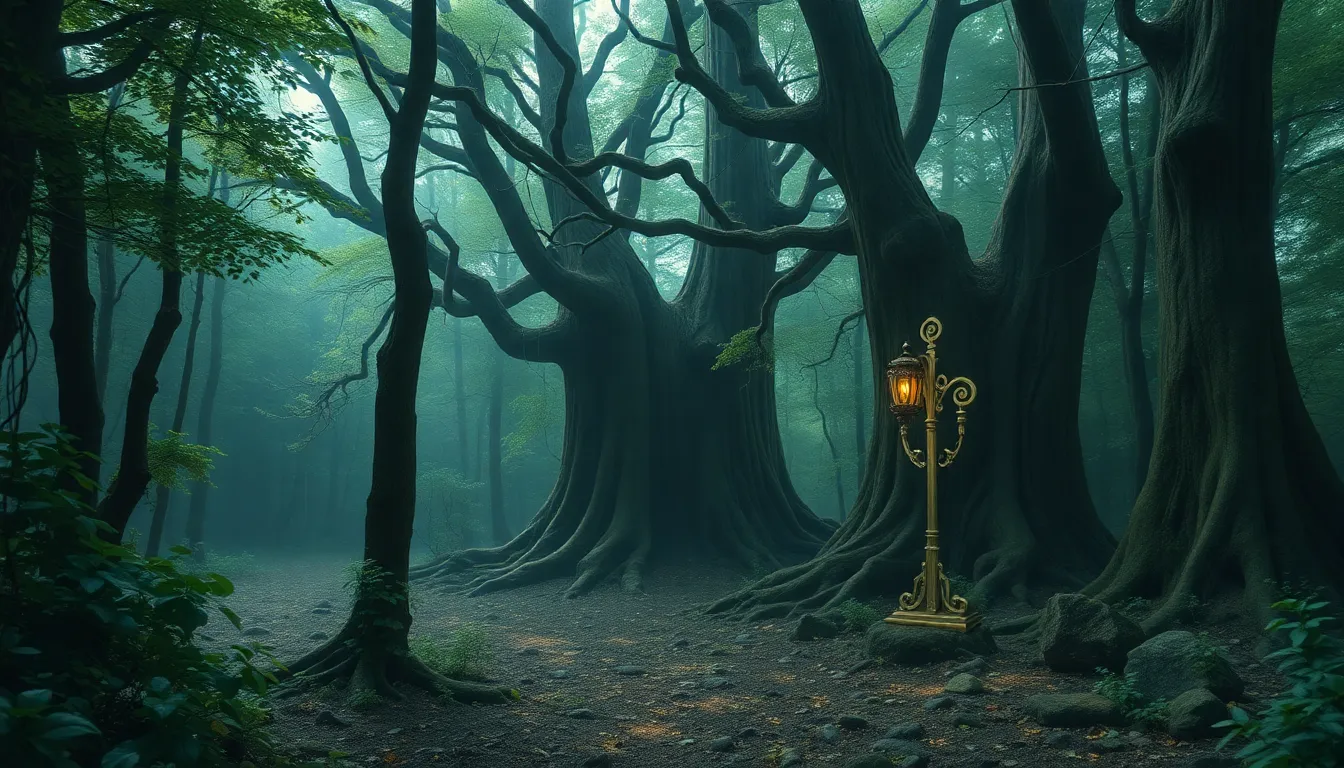The Enchanted Forest: A Portal to Otherworldly Adventures
I. Introduction
Enchanted forests are a captivating concept found in folklore and literature, often portrayed as magical realms filled with wonders and mysteries. These forests serve as portals to adventures that transcend the boundaries of reality, inviting characters—and readers alike—into a world of enchantment. Throughout history, enchanted forests have been integral to cultural storytelling, symbolizing the intersection of nature and the supernatural, where the ordinary becomes extraordinary.
II. The Origins of Enchanted Forests
The roots of enchanted forests can be traced back to ancient mythology and fairy tales, where they often served as settings for trials, transformations, and the meeting of the mundane with the magical. Different civilizations have imbued their enchanted forests with unique significance:
- Greek Mythology: The ancient Greeks often depicted forests as homes of nymphs and gods, places where mortals could encounter divine beings.
- European Fairy Tales: Many tales feature enchanted forests as settings for quests and moral lessons, such as those found in the stories of Brothers Grimm.
- Native American Folklore: Various tribes have stories that highlight the spiritual connections between nature and humanity, often featuring forests as sacred spaces.
Notable enchanted forests from various mythologies include the Forest of Arden from Shakespeare’s works and the mystical woods surrounding the Norse Yggdrasil tree.
III. Characteristics of Enchanted Forests
Enchanted forests are characterized by distinctive features that set them apart from ordinary woodlands:
- Distinctive Flora and Fauna: These forests often showcase unusual plants and creatures, such as luminescent flowers, talking animals, or mythical beings like fairies and elves.
- Magical Phenomena: Enchanted forests are known for supernatural elements like shimmering lights, time distortions, and portals to other realms.
- The Ambiance: The sounds, sights, and scents of enchanted forests evoke wonder and mystery, with rustling leaves, melodious birds, and the sweet fragrance of blossoms.
IV. Famous Enchanted Forests in Literature
Enchanted forests have played pivotal roles in countless literary works, often serving as backdrops for character development and plot progression:
A. Analysis of Classic Works Featuring Enchanted Forests
- “A Midsummer Night’s Dream” by William Shakespeare: The forest acts as a transformative space where love and magic intertwine, leading to comedic misunderstandings and resolutions.
- “The Chronicles of Narnia” by C.S. Lewis: The woods serve as a gateway to the magical land of Narnia, where the protagonists encounter both danger and wonder.
B. Modern Adaptations
Modern adaptations of enchanted forests often reinterpret their themes, bringing fresh perspectives while retaining the essence of magic and adventure. Films like “Into the Woods” and “Pan’s Labyrinth” explore darker elements of enchantment, highlighting the complexity of human experience.
C. Role in Character Development
These settings often serve as catalysts for character growth, forcing individuals to confront their fears, desires, and ultimately, their true selves.
V. Enchanted Forests in Popular Culture
The allure of enchanted forests extends into popular culture, influencing various forms of media:
A. Films and TV Shows
- Disney Adaptations: Movies like “Snow White” and “Frozen” showcase magical forests filled with whimsical creatures and moral lessons.
- Video Games: Games such as “The Legend of Zelda” and “Ori and the Blind Forest” immerse players in enchanting landscapes teeming with adventure.
B. Merchandising
The commercialization of enchanted forests through toys, clothing, and themed merchandise has shaped cultural perceptions, making these magical realms accessible and appealing to a wider audience.
VI. Real-Life Locations Inspired by Enchanted Forests
Some real-world forests capture the enchantment of their fictional counterparts:
- Redwood National Park, California: Home to towering trees and an ethereal atmosphere, this park invites visitors to experience nature’s grandeur.
- Black Forest, Germany: Rich in folklore and mystery, this forest has inspired countless tales of enchantment and adventure.
B. Case Studies
Tourist attractions, such as the Enchanted Forest Theme Park in Oregon, echo the magic of enchanted forests, offering immersive experiences that blend fantasy with reality.
C. Conservation Efforts
Preserving these natural wonders is crucial for maintaining their beauty and ecological significance, prompting various conservation initiatives worldwide.
VII. The Psychological Impact of Enchanted Forests
The psychological allure of enchanted forests often lies in their ability to provide an escape from reality:
- Nature as an Escape: Spending time in forested areas allows individuals to disconnect from the stresses of modern life.
- Therapeutic Benefits: Forest therapy has been shown to reduce anxiety and improve mental well-being.
- Inspiring Creativity: Stories of enchanted forests encourage imagination and creativity, motivating individuals to explore their narratives.
VIII. Crafting Your Own Enchanted Forest Adventure
Creating your own enchanted forest experience can be a delightful endeavor:
- Tips for Immersion: Utilize local parks or gardens to set the scene, incorporating elements like fairy lights or themed decorations.
- Storytelling Sessions: Organize community events where participants share their tales of adventure and magic.
- Encouragement to Share: Readers are invited to share their own enchanted forest stories, fostering a community of creativity.
IX. The Future of Enchanted Forests in Storytelling
As storytelling evolves, so too do enchanted forests:
- Trends in Contemporary Literature: New narratives explore themes of conservation and the interconnectedness of nature and humanity.
- Digital Storytelling: The rise of interactive media allows audiences to experience enchanted forests in innovative ways, from virtual reality to immersive video games.



